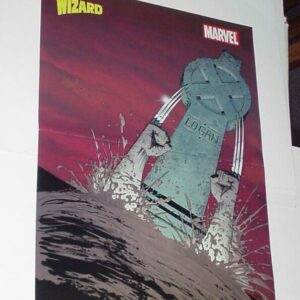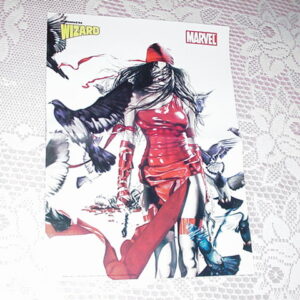Description
The Lizard (a.k.a. Curt Connors) is a supervillain in the Marvel Comics Universe. He is an enemy of Spider-Man. In the stories, Dr. Connors was a genetic biologist who researched the ability of certain reptiles to regrow missing limbs, partially to find a way to regenerate his right arm. After a test on himself, he transforms into a violent lizard monster. Though able to revert to his human form, he suffers occasional fits of his alter ego breaking free.
Curt Connors was played by Dylan Baker in Spider-Man 2 and Spider-Man 3. Rhys Ifans played Dr Curtis Connors and his Lizard alter ego as the main antagonist in the 2012 film The Amazing Spider-Man. The Lizard first appeared in The Amazing Spider-Man #6 (November 1963), and was created by Stan Lee and Steve Ditko.
Curtis “Curt” Connors was born in Coral Gables, Florida. He was a gifted surgeon who enlisted in the U.S. Army and was sent off to war. He performed emergency battlefield surgery on wounded GIs, but his right arm was injured in a blast and had to be amputated. After his return to civilian life as a research technologist, Connors became obsessed with uncovering the secrets of reptilian limb regeneration. Working from his home in the Florida Everglades with the help of war buddy Ted Sallis, he finally developed an experimental serum taken from reptilian DNA. He successfully regrew the missing limb of a rabbit and then chose to test it on himself. Connors ingested the formula and his missing arm did indeed grow back. The formula had a side effect; Connors was subsequently transformed into a reptilian humanoid monster.
Doctor Curtis Connors gave himself superhuman powers as a result of exposure to mutagenic chemicals, allowing him to transform into the Lizard. In human form, he has none of his superhuman powers, but he is highly intelligent and a well known scientist in fields of genetics, physics, biochemistry, and herpetology.
When Connors is transformed into the Lizard, his strength is increased to superhuman levels. Likewise, his speed, stamina, agility, and reflexes are also raised to a level equivalent to that of Spider-Man. He can also scale walls using a combination of his sharp claws and micro-scales on his hands and feet that create molecular friction like those of a gecko lizard. He is highly resistant to injury due to his thick scaly hide, allowing him to resist punctures and lacerations from ordinary weapons and lower-caliber firearms. In addition, the Lizard has highly enhanced healing abilities which allow him to quickly recover from grievous wounds, including regenerating lost limbs. He also has a powerful tail which he can whip at high speeds. The Lizard has razor-sharp teeth set in muscular jaws that can deal a lethal bite. (The latter is established in the Lizard’s later appearances; in his earlier appearances he seems to have no teeth at all.) Like a reptile, he has cold-blooded characteristics and is therefore sensitive to drops in temperature; a sufficiently cold environment will cause his metabolism to slow drastically and become dormant if he is exposed to cold temperatures for too long.
The Lizard can mentally communicate and command all reptiles within a mile of himself via limited telepathy. He has also on at least one occasion secreted powerful pheromones which caused nearby humans to behave violently. Post-Brand New Day, a further enhancement of his telepathy granted him the power of telepathically compelling humans to act out their primal urges, by suppressing emotional control in their amygdala (the “lizard brain”).
Stephen J. “Steve” Ditko (born November 2, 1927) is an American comic book artist and writer best known as the artist and co-creator, with Stan Lee, of the Marvel Comics heroes Spider-Man and Doctor Strange.
Ditko studied under Batman artist Jerry Robinson at the Cartoonist and Illustrators School in New York City. He began his professional career in 1953, working in the studio of Joe Simon and Jack Kirby, beginning as an inker and coming under the influence of artist Mort Meskin. During this time, he then began his long association with Charlton Comics, where he did work in the genres of science fiction, horror, and mystery. He also co-created the superhero Captain Atom in 1960.
During the 1950s, Ditko also drew for Atlas Comics, a forerunner of Marvel Comics. He went on to contribute much significant work to Marvel, including co-creating Spider-Man, who would become the company’s flagship character. Additionally, he co-created the supernatural hero Doctor Strange and made important contributions to the Hulk and Iron Man. In 1966, after being the exclusive artist on The Amazing Spider-Man and the “Doctor Strange” feature in Strange Tales, Ditko left Marvel for reasons never specified.
Ditko continued to work for Charlton and also DC Comics, making major contributions, including a revamp of the long-running character Blue Beetle, and creating or co-creating the Question, the Creeper, Shade, the Changing Man, and Hawk and Dove. Ditko also began contributing to small independent publishers, where he created Mr. A, a hero reflecting the influence of Ayn Rand’s philosophy of Objectivism. Since the 1960s, Ditko has declined most interviews, stating that it is his work he offers readers, and not his personality.
Lee and Ditko’s collaboration on the series saw the creation of many of the character’s best known antagonists including Doctor Octopus in issue #3 (July 1963); the Sandman in #4 (Sept. 1963); the Lizard in #6 (Nov. 1963); Electro in #9 (March 1964); and the Green Goblin in #14 (July 1964). Ditko eventually demanded credit for the plotting he was contributing under the Marvel Method. Lee concurred, and starting with #25 (June 1965), Ditko received plot credit for the stories.
Ditko was inducted into the comics industry’s Jack Kirby Hall of Fame in 1990, and into the Will Eisner Award Hall of Fame in 1994.
Near mint condition.
Related products
-


X-Men Poster #35 Mystique Mike Mayhew Skull HOT # 9 Cover
$34.99 Add to cart -


Wolverine Poster #13 Lives! by John Cassaday X-Men
$34.99 Add to cart -


Punisher Poster # 6 by Wieslaw Walkuski Born Frank Castle Origin Movie
$29.99 Add to cart -


Elektra Poster # 2 by Rodolfo Migliari Daredevil Thunderbolts
$29.99 Add to cart


